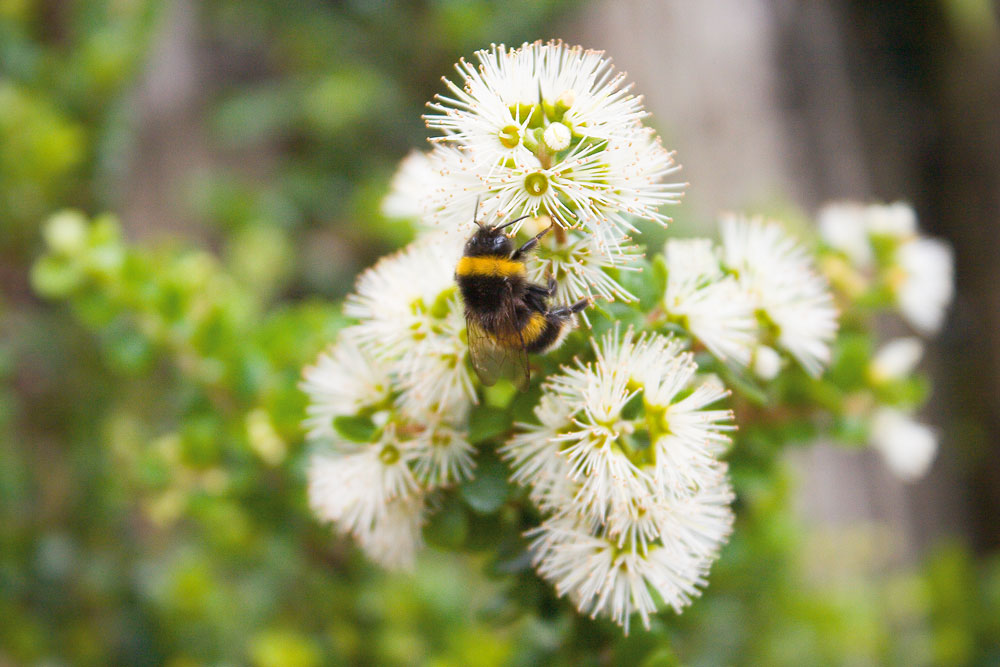An Irish study has confirmed that pesticides, commonly used in farmland, significantly harm bumblebees — one of the most important wild pollinators. In a huge study spanning 106 sites across eight European countries, researchers have shown that despite tightened pesticide regulations, far more needs to be done.
While the agricultural uses of insecticides have been in the spotlight for their negative effects on bees, it has remained unknown how the effects scale beyond single substances in focal fields.
In this case, a large team of researchers answered recent calls for a more realistic assessment of the risks posed by mixtures of commonly used pesticides at landscape scales.
The findings, published his week in the leading journal Nature, show that despite the world’s most rigorous risk assessment process, the use of approved pesticides in European agricultural landscapes still negatively affects non-target organisms — significantly reducing the colony performance of bumblebees, a key wild and commercial pollinator.
Although not perhaps a major surprise, the results were nonetheless sobering.
Bumblebee colonies exposed to these pesticides saw significant reductions in 1) total colony production (the number of cocoons), 2) maximum colony weight, and 3) the number of new queens.
“When you step outside the laboratory, a challenge of ecotoxicology is to capture the effect of real-world practices at organism-relevant scales,” said Dr Charlie Nicholson, co-lead author and postdoc at Lund University.
“With the largest experimental field deployment of any pollinator, we see that bumblebees encounter multiple pesticides in agricultural landscapes, resulting in fewer offspring. On top of this, pesticides do more harm in landscapes with less habitat.”
Dr Jessica Knapp, co-lead author, now at Trinity College Dublin, said:
“The data also show us how bumblebees perform when we use less pesticides. These ‘healthier’ colonies that experience less pesticide risk help us generate a baseline to show that 60% of our bumblebee colonies would fail proposed pollinator protection goals.
“Our findings show that the current assumption of pesticide regulation — that chemicals which individually pass laboratory tests and semi-field trials and are considered environmentally benign — fails to safeguard bees and potentially other pollinators that support agricultural production and wild plant pollination.”
The study forms a key output of PoshBee — a pan-European project seeking to monitor and improve bee health.
“The scale of this work provides a step-change in our understanding of the impact of agrochemicals on pollinator health. It was possible through EU funding that supported the project involving 13 countries. Bumblebees, and other animals, do not recognise international borders, and to protect them, we need to take a similarly international approach,” saidPoshBee coordinator Professor Mark Brown, Royal Holloway University of London.
Prof. Jane Stout at Trinity College Dublin and coordinator of the pan-European field experiment added: “This work was possible because of the collaboration and dedication of the transdisciplinary field teams in each country and the partnership with the labs that conducted the common analyses. Researchers, beekeepers, and farmers worked together to implement common protocols to collect these unique data. Similar collaborative approaches will be needed if we are to turn the tide and offer the far greater protection that pollinators need.”
The study findings support the need for sustainability goals to reduce pesticide use and risk — critical challenges highlighted at the Convention on Biological Diversity’s COP 15 meeting and a vital part of the European Farm to Fork strategy — with anticipated benefit to bees and, potentially, their pollination services.
Dr Maj Rundlöf, the senior author and researcher at Lund University, concluded: “Our work supports the development of landscape-based environmental risk assessment and post-approval monitoring of bees’ pesticide exposure and effects. Our approach is promising for this, but there is also a need to better understand how the wider pollinator community is exposed to and potentially impacted by pesticide use.”
Ireland is already leading in reducing the use and risk of pesticides by 2050. But knowing that pesticides do more harm in landscapes with less habitat reiterates the importance of the All Ireland Pollinator Plan for boosting pollinator habitat across Ireland, which can, to some extent, mitigate the pesticides our bees are exposed to.
Journal Reference:
- Charlie C. Nicholson, Jessica Knapp, Tomasz Kiljanek, Matthias Albrecht, Marie-Pierre Chauzat, Cecilia Costa, Pilar De la Rúa, Alexandra-Maria Klein, Marika Mänd, Simon G. Potts, Oliver Schweiger, Irene Bottero, Elena Cini, Joachim R. de Miranda, Gennaro Di Prisco, Christophe Dominik, Simon Hodge, Vera Kaunath, Anina Knauer, Marion Laurent, Vicente Martínez-López, Piotr Medrzycki, Maria Helena Pereira-Peixoto, Risto Raimets, Janine M. Schwarz, Deepa Senapathi, Giovanni Tamburini, Mark J. F. Brown, Jane C. Stout, Maj Rundlöf. Pesticide use negatively affects bumble bees across European landscapes. Nature, 2023; DOI: 10.1038/s41586-023-06773-3
Source: ScienceDaily












